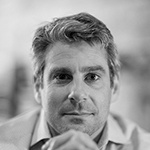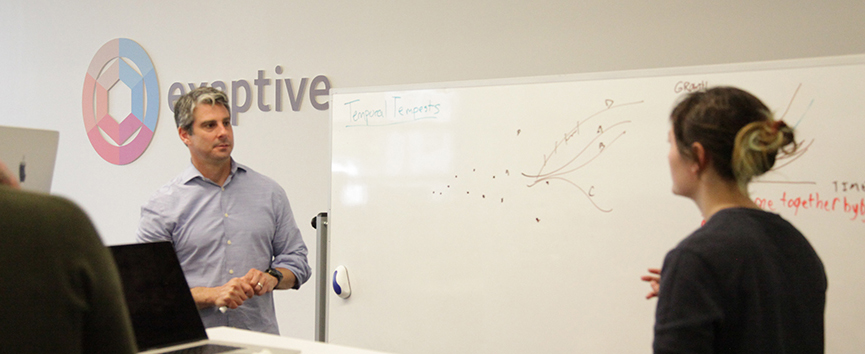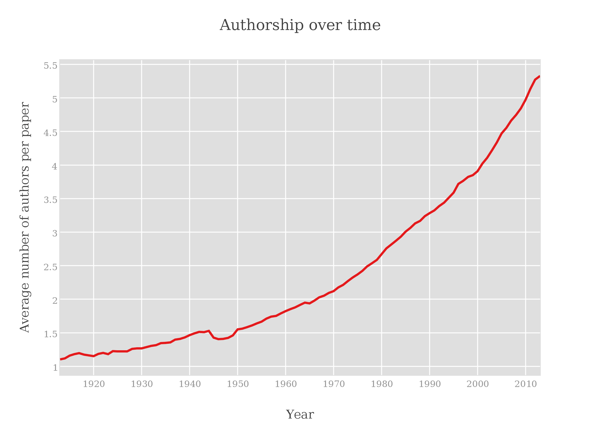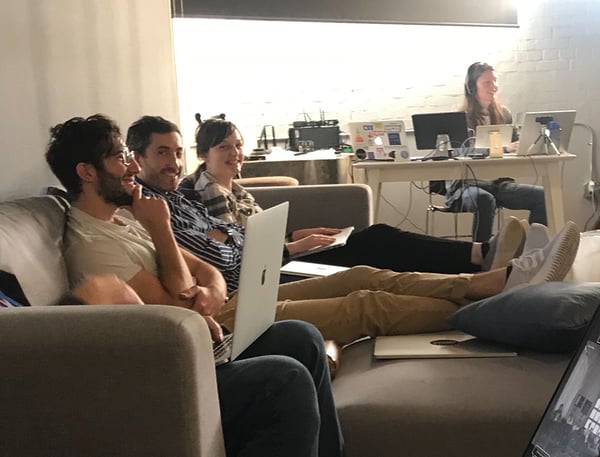
Have you ever read the book Travels with Charley by John Steinbeck? The first part of the book is John Steinbeck talking about his lifelong affliction with wanderlust. I spent a few years living out of a VW camper van, indulging my own wanderlust affliction, so the book quickly claimed a special place in my heart. Steinbeck is such a skilled writer, and he describes the feeling - “bumdom” - so well. But I especially loved when he included a line indicating he was not writing about wanderlust for his own sake, but instead:
“I set it down only so that newcomers to bumdom, like teen-agers in new-hatched sin, will not think they invented it.”
There are certain things we feel so intensely that we just think they're ours. No one has loved like this before! No one has struggled like this before! But we have. Humans have been feeling these feelings for at least as long as we have been writing things down.
The mission of Exaptive is to facilitate innovation. This mission is intensely personal and intensely meaningful to me, and to my whole team. It’s a mission to discover how we can use technology - not to solve one specific problem - but to accelerate the very way the world solves problems.
Our focus feels like this really heady, meta thing. Since founding the company in 2011 we’ve been chipping away at that big vision. Along the way we've had opportunities to carve a niche for ourselves in personalized medicine or military intelligence or climate science. But we don’t want to solve those big problems ourselves. Lots of really smart people are already working on those problems. We want to connect those really smart people and give them the tools they need to solve problems better.
 |
| Me, listening to our data scientist Alanna Riederer's ideas at a hackathon a few months ago. Photo by Jill Macchiaverna. |
The way the world currently solves problems is less than ideal. Experts have to focus in with such specialization that they become trapped in knowledge silos very hard to bridge. Disciplines create such detailed domain-specific languages they miscommunicate without even realizing that they are using the same words to mean different things. Teams reinvent the same solutions many times over because it’s too hard to keep up with what colleagues are producing and too hard to figure out how to integrate efforts. So the world has relied on serendipity for those ah-ha moments where the right people meet and realize how their individual pieces of the puzzle fit together to form new solutions.
If we’re going to move society forward we need to get better at how we integrate different people’s work and knowledge. The average number of authors in scientific papers has gone up by a factor of 5 from the 1920s to today. Discoveries used to be made by individuals, but now discoveries require teams.
 |
| The rising trend in authorship. Robert Aboukhalil. Simons Center for Quantitative Biology, Cold Spring Harbor Laboratory, Cold Spring Harbor, NY 11724 |
Making a team productive requires a very different set of tools than those for just making individuals productive. Many of the people on those teams are themselves tool builders - scientists create experimental setups, data-scientists write code, programmers build applications, managers construct processes. Giving tool builders the best tools requires creating tools that make it easier to create tools.
This realization feels so “meta” that it might be easy to dismiss as some semantic game, but it’s anything but. Society’s advancement will not come from solutions nor from tools, but from advances in how we make tools. Using cotton for fabric solved a problem. The cotton gin was a tool that made doing so easier. But interchangeable parts was a change in the very nature of making tools like the cotton gin, and that’s what led to the Industrial Revolution. This realization was what led me to start Exaptive - the realization that technology could lead to a revolution not just of new ideas, but of the pace of new ideas. It is a vision that still makes my palms sweaty with excitement when I think about it. And when I think about it, the thoughts feel so intense and personal that it’s easy to become one of Steinbeck’s teenagers, thinking that those thoughts are mine alone.
Of course, there are lots of other people thinking passionately about these issues, and there have been for decades. I had a fantastic experience this month getting to know some of them. I was invited to spend a weekend in Silicon Valley demoing the Exaptive platform at a conference celebrating the 50th anniversary of Doug Engelbart's “Mother of All Demos.”
 |
| A pre-conference demo meeting was held for a small group of participants in the exact hotel where Vint Cerf and Robert Kahn designed the Internet Architecture and TCP specification in 1973, five years after Engelbart’s famous demo. We took a group picture in front of a plaque that commemorates the achievement. In front of the plaque, Vint Cerf himself, in his signature three-piece suit. I’d like to think that Engelbart would have enjoyed the somewhat recursive nature of having Vint in front of a plaque to Vint! Back row, left to right: Frode Hegland, Bruce Horn, Bob Czech, Dan Whaley, Marc Weber, Chris Gutteridge, Douglas Crockford, Adam Cheyer, Jack Park. Middle row, left to right: Bob Frankston, Dave King, Shannan Callies. Front row, left to right: Duke Crawford, Nima Johari, Vint Cerf, Harvey Lehtman, Marc-Antoine Parent. |
It was such an honor to participate, and I’m indebted to Frode Hegland for inviting me. (You can read Frode’s blog post about it here.) I had the amazing privilege to meet many of the great internet pioneers that made the famous Engelbart demo possible, and the things that followed from it. I got to hear them talk with great passion about the vision they had for technological revolution and got to see the amazing projects that they had devoted their careers to working on.
I got to hear Doug’s daughter, Christina Engelbart, Director of the Doug Engelbart Institute, talk about her father’s “ABC Model” for improvement:
- “A Activity: 'Business as Usual'. The organization's day to day core business activity, such as customer engagement and support, product development, R&D, marketing, sales, accounting, legal, manufacturing (if any), etc.
- B Activity: Improving how we do that. Improving how A work is done, asking 'How can we do this better?'
- C Activity: Improving how we improve. Improving how B work is done, asking 'How can we improve the way we improve?'"
--http://www.dougengelbart.org/content/view/192/165/
As I listened to Christina describe Doug’s vision for collective intelligence and the great hope he placed in co-evolution, I heard John Steinbeck’s smiling voice in my ear, gently laughing at me, “Doug set it down only so that newcomers to co-evolution, like teen-agers in new-hatched sin, will not think they invented it.” And I heard the words of John of Salisbury, which possibly belonged to someone before him, “We are like dwarfs sitting on the shoulders of giants. We see more, and things that are more distant, than they did, not because our sight is superior or because we are taller than they, but because they raise us up, and by their great stature add to ours."
We all stand on the shoulders of giants, but it’s easy to not really know who exactly those giants are. It’s easy to take momentary pleasure in ignoring those shoulders and feeling like a “lone inventor.” But the idea of lone invention is a narcissistic myth as well as an ineffective way to make change. Ideas are not lightbulbs over the heads of genius individuals. They are networks woven from many threads of collaboration.
The Engelbart conference showed me that in the quest towards co-evolution there are more allies in the world than I had thought, and more history on our side than I had known. I saw all the people in the conference hall united in a vision of technology-facilitated innovation. I got to see and hear from the heros on whose shoulders the whole Exaptive team sat, and to hear about those heros’ heros on whose shoulders they had been seated. For a weekend I got to be a node in that incredible idea network. It was exciting, thought-provoking, and unbelievably energizing.
In one of my favorite talks at the conference, the speaker told the story of the drunk man looking for his keys under the streetlight. He lost them in the dark part of the street, but was searching “where the light was better.” I’d heard the story before, but hadn’t heard it applied to technologists building tools and companies where it was easy to do so. That light, the speaker said, was the light of doing what we already know how to do with technology that already works. It was the light of large investment funds focused on overly quick returns. It was the light of the lean methodology demanding that we think in terms of the most minimal of minimal viable products and the light of agile programming asking us what incremental value we can ship in just one sprint. “I see a lot of people running sprints under the streetlight,” said the speaker, “but I don’t see anybody willing to run marathons in the darkness anymore.”
That talk was powerful for me. Over the years of building Exaptive we have certainly felt that it was more a marathon than a sprint. Our team has worked tirelessly in pursuit of a vision that we all truly believe in, and yet we know that as far as we’ve come we still have a ways to go. To hear one of Doug Engelbart’s teammates encourage us was like a drink of Gatorade in the middle of a long, hard race. He not only encouraged us to run the distance, but reminded us how big the impact on the world could be when people prioritized that sort of stamina.
After the conference was over, the experience really stuck with me on a deep, emotional level. It’s taken me a couple weeks to process all the thoughts it generated and find the words to write this blog post. I kept thinking about how Doug Engelbart is gone now, and even 50 years after his demo, what people had to say about him was so incredibly positive. I found myself thinking how proud his daughter must be to hear her father and his team extolled that way. Engelbart ends up being the centerpiece, but many people are still alive today who were in their 20s and 30s when they worked with him. When they presented what they did back then it was not only with a well-deserved pride in what they had accomplished 50 years ago, but with an unwavering conviction that it was still the right path to be on today. Many of them are still devoting their lives to “the unfinished revolution.”
 |
| In 50 years, what will our team members think of the work they did at Exaptive? Left to right: Austin Schwinn, Kent Morgan, Alanna Riederer, Jill Macchiaverna. Many other awesome Exaptivists not pictured. Photo by Shannan Callies at a recent company meeting. |
That feels important when I think about my commitment to the Exaptive team. I've given people stock and of course feel incredibly compelled to make that stock worth something. I’ve built a business plan that drives towards IPO and I feel the intense responsibility to get us there. But the Engelbart conference put me in touch with another responsibility I feel, one I’m just as committed to. Fifty years from now, could our kids hear other people talk about what we tried to do at Exaptive and feel proud of us? Would the next generation of engineers and entrepreneurs hold that same conviction that we had set down the right path? Would they see the marathon we ran and be encouraged to run their own long races outside the safety of the streetlight? Most importantly, would they be able to stand upon the tower of ideas and demos that we had assembled and see further than we had? Because ultimately, that is the Exaptive mission - that’s what the facilitation of innovation is all about.
Comments